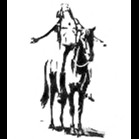Birdwatching In Isan
-
Recently Browsing 0 members
- No registered users viewing this page.
-
Topics
-
-
Popular Contributors
-
-
Latest posts...
-
47
Crime Foreigner Buries Dog Alive in Shocking Phuket Incident
You are using thiis as an opportunity to post discredited slurs in respect to Dr. Fauci. None of what you has stated is true and the link you refer to does not support your lies. -
167
-
81
Crime Disabled British Tourist Robbed by Trio in Pattaya Hotel Room
This is a lot of money to MANY people. In my case, it can buy for my 26 cats 71 packets of cat treats (enough for maybe 3 years) or 9 x 20 kgs of dried cat food (1 bag per 3 weeks) or 379 cans of wet cat food (enough for a year @ 1 can per day). If the sum is of no consequence to you, please send the amount to Catdom's Chief Accountant: https://i.pinimg.com/736x/a6/71/13/a67113986cc2f2226c8ec9bd60476467.jpg -
6
-
167
Why do people want to live in Isaan?
I did in Phitsanulok. Nothing else to do there. -
168
Kissing on the mouth
At last, an intellectual thread that does the ASEAN now demographic justice -- and this is just the last page, Sure you did Walter Mitty, sure you did,
-
-
Popular in The Pub



.thumb.jpeg.d2d19a66404642fd9ff62d6262fd153e.jpeg)





.thumb.jpg.08bafad71ee81092af511d2d7aaaf53b.jpg)

Recommended Posts
Create an account or sign in to comment
You need to be a member in order to leave a comment
Create an account
Sign up for a new account in our community. It's easy!
Register a new accountSign in
Already have an account? Sign in here.
Sign In Now